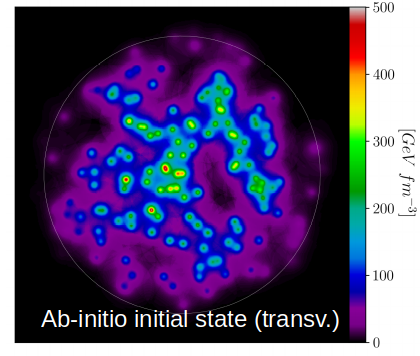GLUODYNAMICS
|
Gluodynamics is a collaborative effort within P2IO to investigate gluons as the source of geometry and forces inside the smallest and hottest droplets of matter formed on earth and in the most important building block of matter, the proton. |

Gluodynamics aims at connecting modern hadron structure results with the fluid dynamic description as well as investigating Quarkonium and jets as multi-scale probes to investigate the gluonic force and gluon radiation in QCD matter.
In the case of the proton structure, the gluon is scarcely explored in more than one dimension, i.e. its proton geometry in momentum and coordinate spate.
The gluon's density behaviour in the limit of high-energy interaction where they dominate proton structure and saturation of the gluon density is controversial.
Nuclear structure in high energy interactions is largely unexplored. Gluodynamics aims at progressing from the experimental and theoretical side on these frontiers of knowledge. The hadron structure is the initial state of the collision of heavy nuclei at very high energies in which quasi-perfect QCD fluids are created and play a crucial role in the understanding of final state observables.
Recently, signs of collective behaviour have been observed in proton-proton and proton-nucleus collisions where fluid production was typically not considered in the description of the data. In particular in these "small" size collisions, the understanding of the role of hadron structure as source of particle production, geometry and correlations is crucial to separate the origin of different phenomena. The investigation of the properties of the QCD fluids created in general in terms of their degrees of freedom and their interaction is only scarcely known.
Gluodynamics is structured along 4 lines of research :
Geometry : the investigation of the density and geometry of the nucleon and nuclei with electromagnetic probes at JLAB and the LHC and the development of new observables for current and future facilities
Unification : the connection and unification of different hadron structure approaches, the use of modern hadron structure from QCD as initial conditions of hydrodynamic simulations in hadronic collisions, the establishment of software tools for the whole community
Gluometer : the measurement of the QCD force and QCD radiation within QCD fluids created in hadronic collisions at the LHC in collider and fixed-target mode
Future : the establishment of P2IO as world leading contributor to future projects of QCD research and the creation of a combined QCD community
